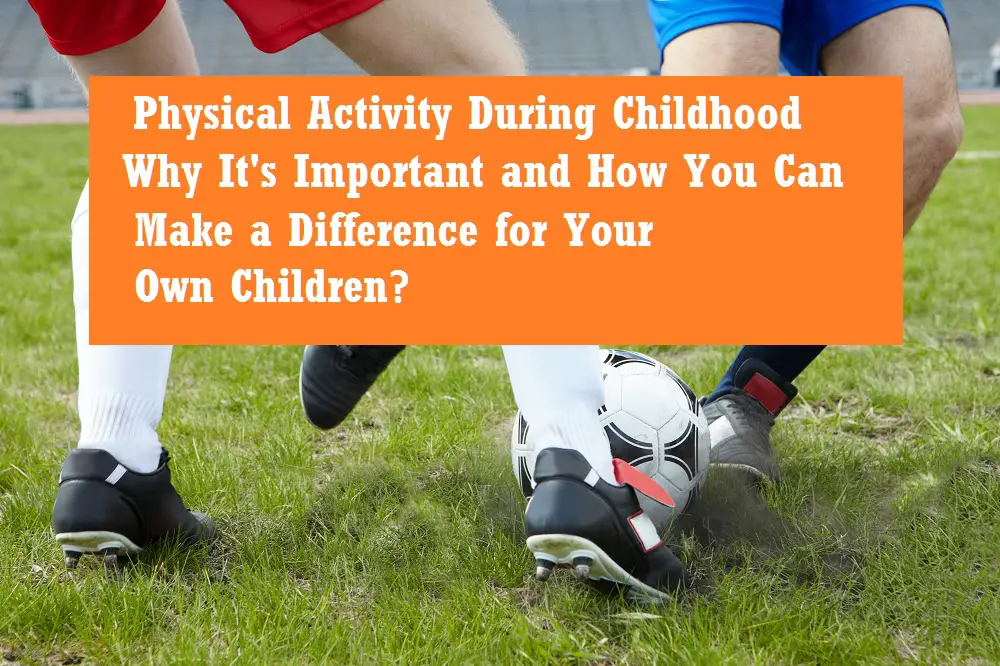As an adult, you know that regular physical activity is essential for your health, but you might not realize that frequent exercise is just as important, if not more important, for your children.
Physical activity during childhood is associated with improved physical and mental wellbeing, and the benefits can extend into adulthood.
In today’s overscheduled, technology-obsessed world, it may seem impossible to ensure that your children get the proper amount of exercise, but with a few strategies, you can help them to prioritize physical activity.
The benefits of regular physical activity are worth the challenge of keeping kids active.
Physical Activity and Mental Functioning During Childhood
Exercise isn’t just about the physical health benefits, as the research shows that children who are physically active also benefit mentally.
In a 2018 report in the Journal of Science and Medicine in Sport, researchers from the University of Groningen and VA University Amsterdam in the Netherlands reviewed the results of 31 studies that assessed the relationship between physical activity and mental functioning in preadolescent children.(1)
According to the studies these researchers reviewed, physical activity is beneficial for attention in the short-term, and over the long-term, exercise improves executive functions, such as planning and organization, in children.
Long-term exercise is also beneficial for attention and academic performance, according to the results of the review, and children who continuously engage in regular exercise derive the greatest benefits.
Based on the results of the research, children who regularly engage in physical activity are likely to do better in school and to develop stronger mental skills compared to those who do not get sufficient amounts of exercise.
Physical Health Impact of Regular Exercise

Childhood physical activity is linked to improved mental functioning, and as expected, it also promotes physical health and wellness.
A 2006 study in the journal PLoS Medicine found that among children aged 16 and under, greater levels of physical activity were associated with lower blood pressure, triglycerides, and blood sugar levels.(2)
Higher physical activity levels were also linked to a lower metabolic health risk, even after controlling for obesity and other confounding factors.
A 2012 review in The Journal of the American Medical Association reached a similar conclusion.(3)
Authors analyzed the results of 14 different studies involving just over 20,000 children and found that those who spent more time engaging in moderate and vigorous intensity physical activity had lower cardiovascular risk factors, regardless of how much time they spent in sedentary activities.
Beyond promoting cardiovascular and metabolic health, physical activity during childhood can prevent the development of obesity.
In a 2003 study in Preventive Medicine, researchers found that children who exercised the most between the ages of 4 and 11 demonstrated a lower gain in body mass index and body fat from early childhood through adolescence.(4)
This effect was seen in both girls and boys, and it suggests that regular exercise throughout childhood can prevent the gain of excess body fat during this stage of life.
How to Promote Physical Activity in Children

The physical and mental benefits of physical activity in children are evident in the aforementioned research, but that doesn’t mean that encouraging children to exercise is always easy.
Promoting regular physical activity often requires parents to commit to a healthy lifestyle and utilize strategies for ensuring that children make exercise a part of their lives.
One such strategy is for parents to allow their children the opportunity to spend time with other active children.
A 2002 study in Pediatric Exercise Science found that the top contributing factor to physical activity in children between grades 1 and 12 was peer support.(5)
Involving children in sports programs with their friends can give them the opportunity to exercise while also receiving support from peers.
Parents can also encourage children to join in active play, such as bike riding or neighborhood soccer games, with peers.
The study in Pediatric Exercise Science also found that children engaged in more exercise when they spent afternoons being active instead of sedentary.
Sending children outside to play while you prepare dinner, or enrolling them in afterschool programs that emphasize physical activity, can also help them to get an adequate amount of exercise.
Additional factors can promote physical activity among children.
In 2015, researchers writing for the Journal of Obesity reviewed the research regarding the ways that parents can influence children’s physical activity levels.(6)
They determined that numerous studies have shown that parents who are more physically active have more physically active children.
Furthermore, after reviewing the studies, the researchers determined that there is also relatively strong evidence that support and encouragement from parents leads to increased levels of physical activity.
Therefore, parents can model healthy exercise behaviors, encourage, and support physical activity to help their children become more active.
Some examples of parental support and encouragement that the researchers mentioned were taking children to places where they engaged in physical activity, telling children that physical activity was beneficial, and exercising with their children.
Specific Strategies for Encouraging Physical Activity
The research has demonstrated that parents can effectively increase their children’s levels of physical activity.
Here are some more specific ways for helping your children to get more exercise:
- Take a family hike or bike ride.
- Sign your child up for a class, such as swimming, karate, ballet, or gymnastics, and let him or her choose which class to do.
- Except in cases of inclement weather, have a family rule that children must spend time outside after school before using devices or watching TV.
- Spend time at local gyms or community centers that offer open gym time or opportunities for active play.
- Invite older children to come to the gym with you or go outside for a run.
- Take trips to the local park and engage with your child in a game of tag.
In Conclusion
There are numerous ways to encourage and support children to be physically active so they get adequate amounts of exercise for optimal health and wellbeing.
While promoting physical activity does tend to require effort from the parent, it is likely to pay off in the form of improved mental functioning, a healthier body weight, and a reduced risk of high blood pressure, high cholesterol, and elevated blood sugar levels.
Additionally, the habits you help your children to develop now can have a lasting impact; a study in a 2005 edition of the American Journal of Preventive Medicine found that children aged 9 to 18 who consistently engaged in high levels of physical activity were more likely to be physically active as adults.(7)
Leave Feedback: Was this article helpful?

